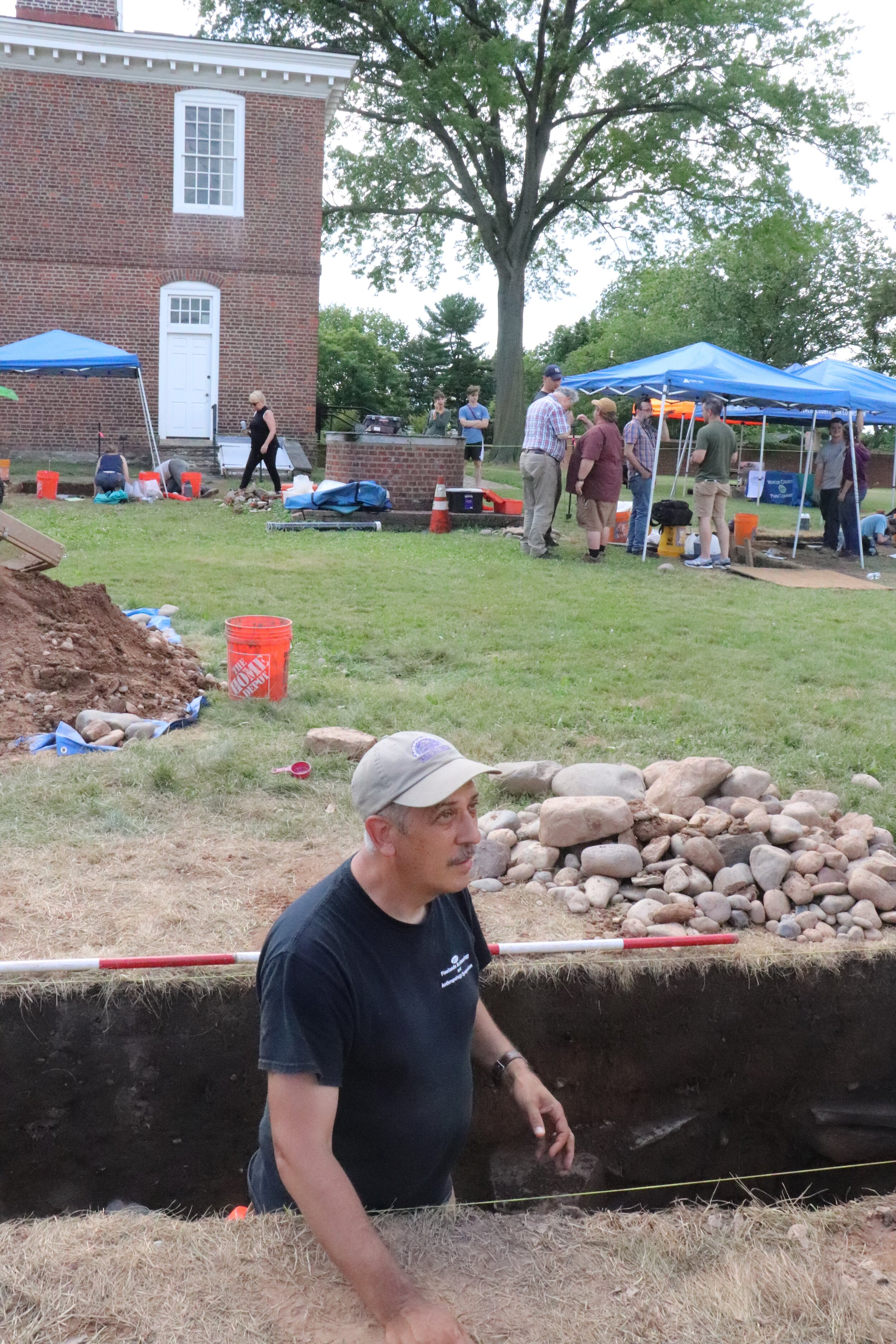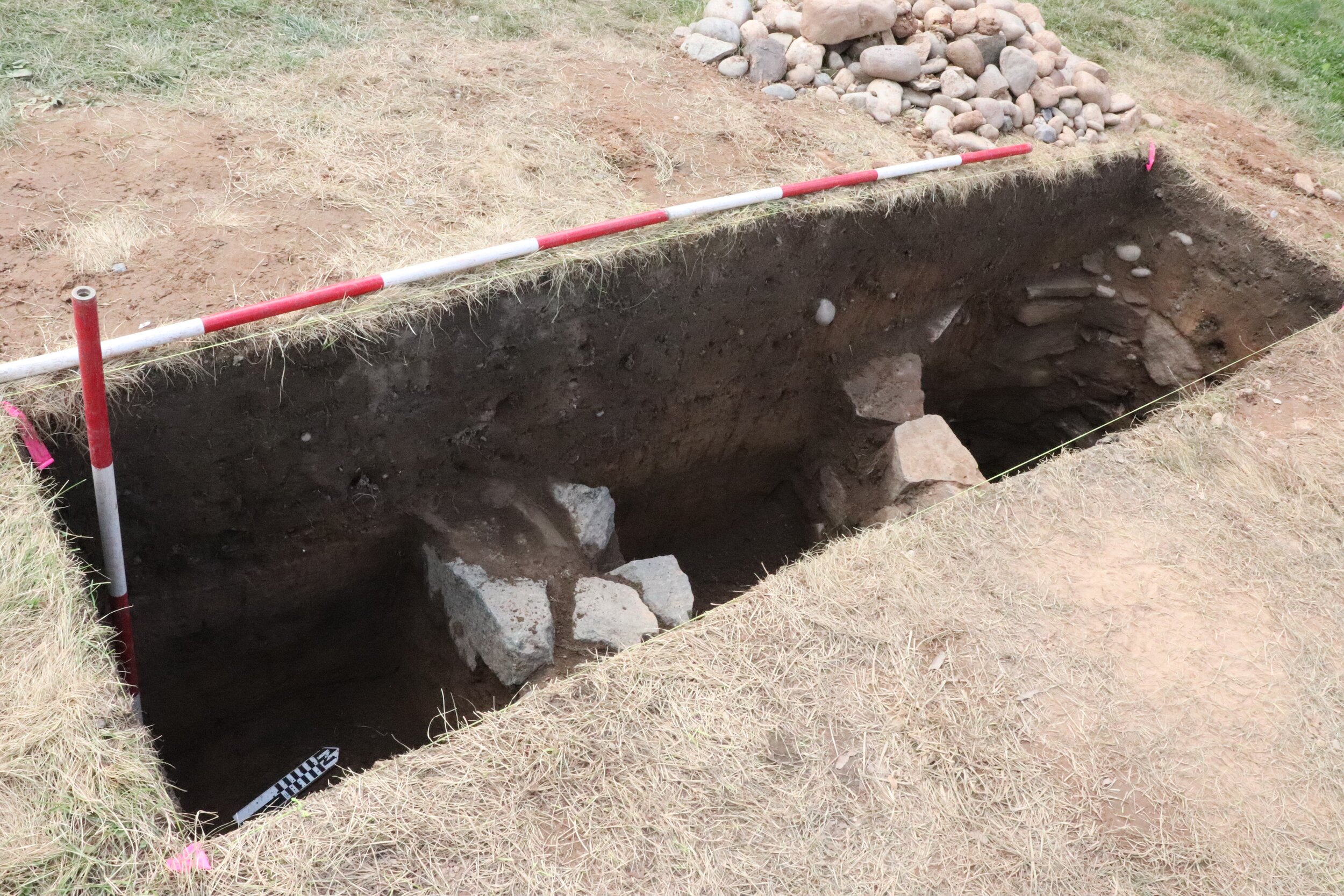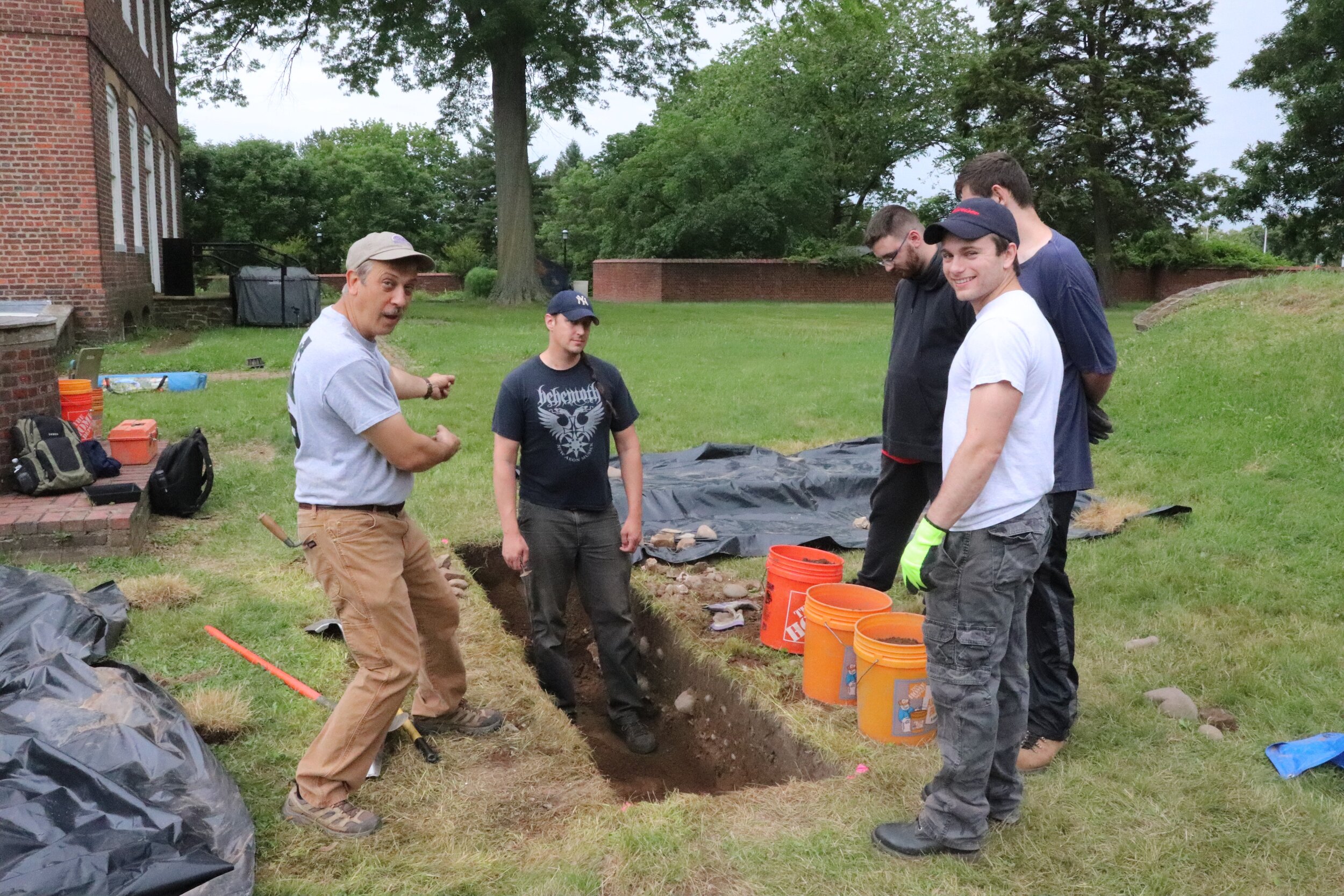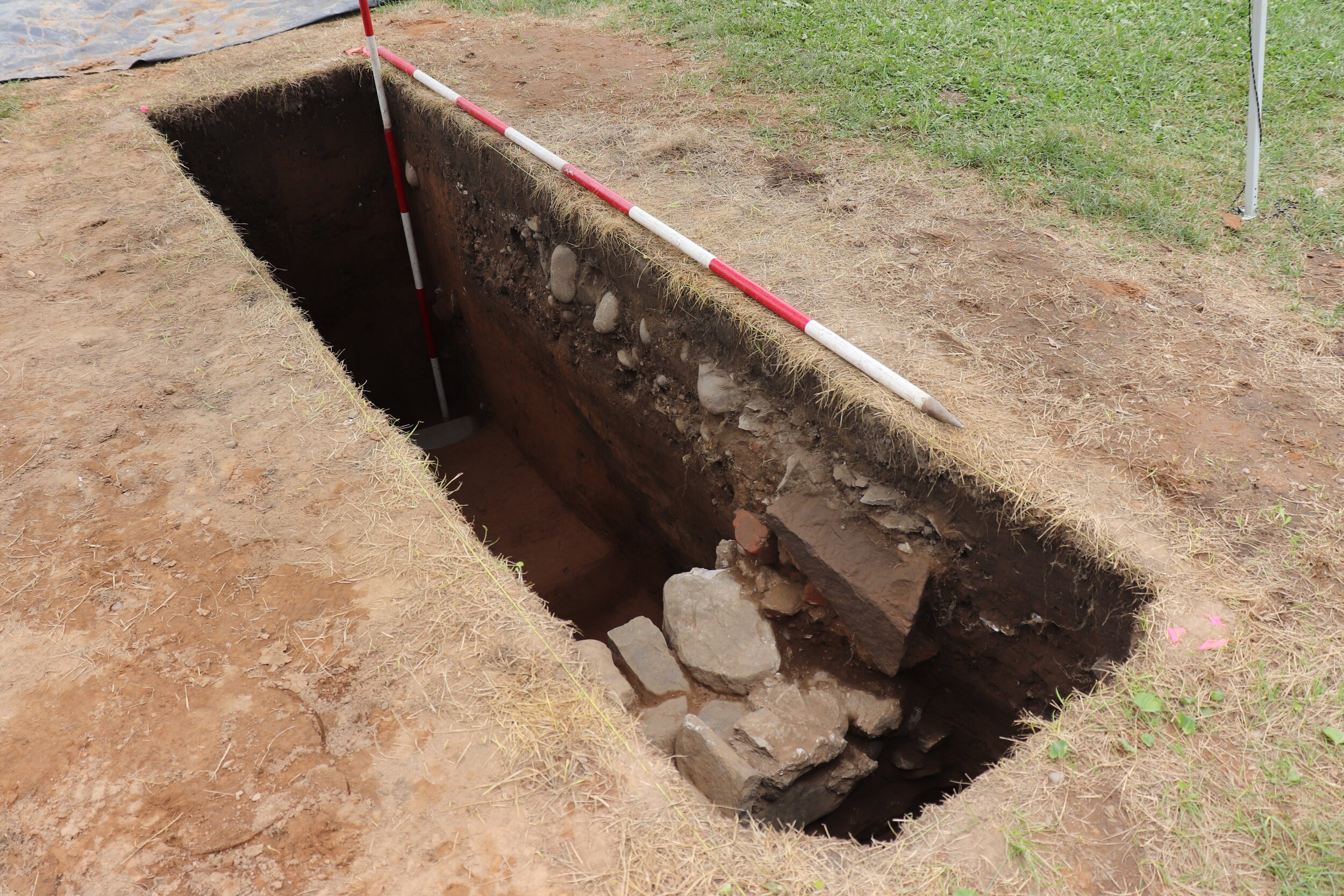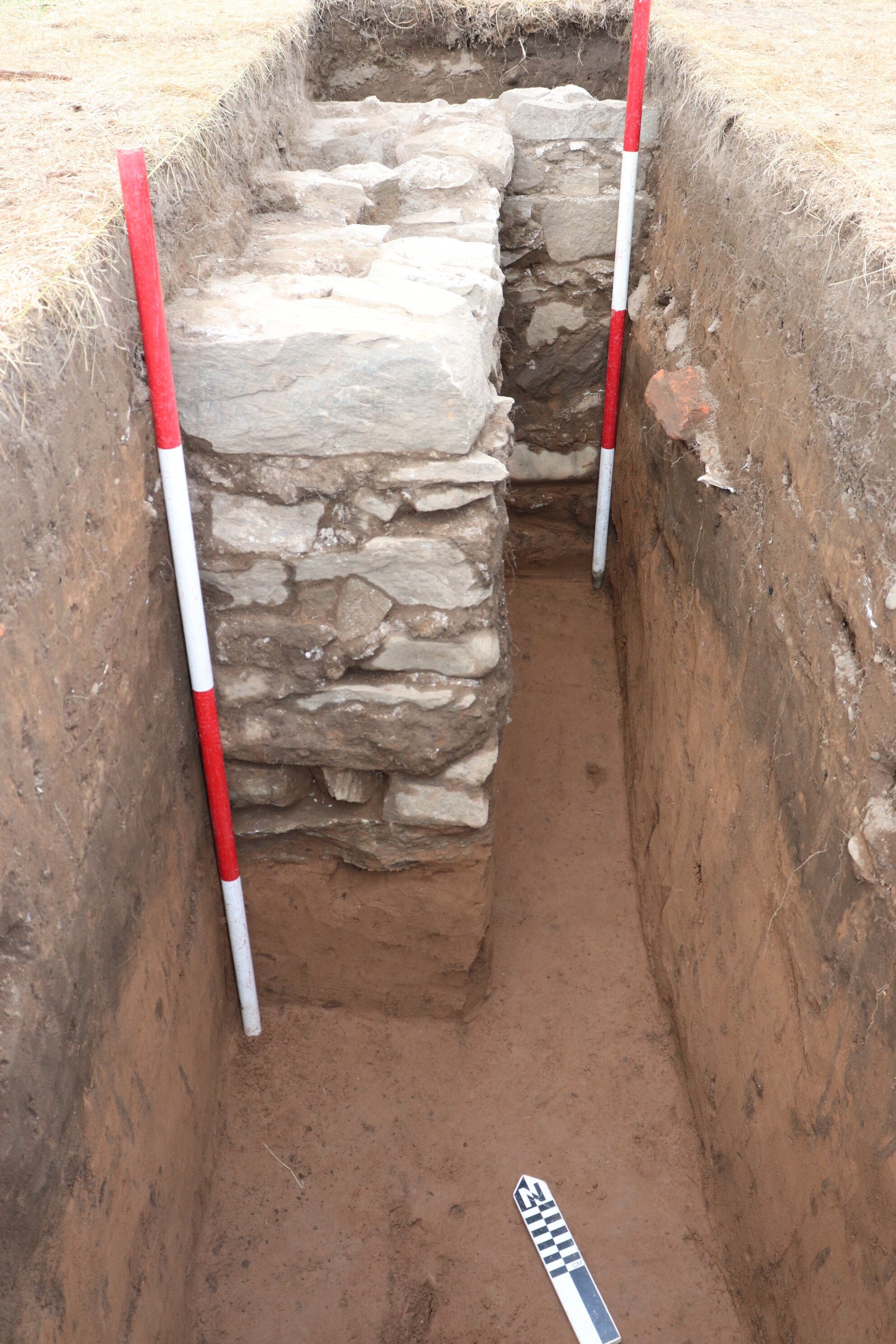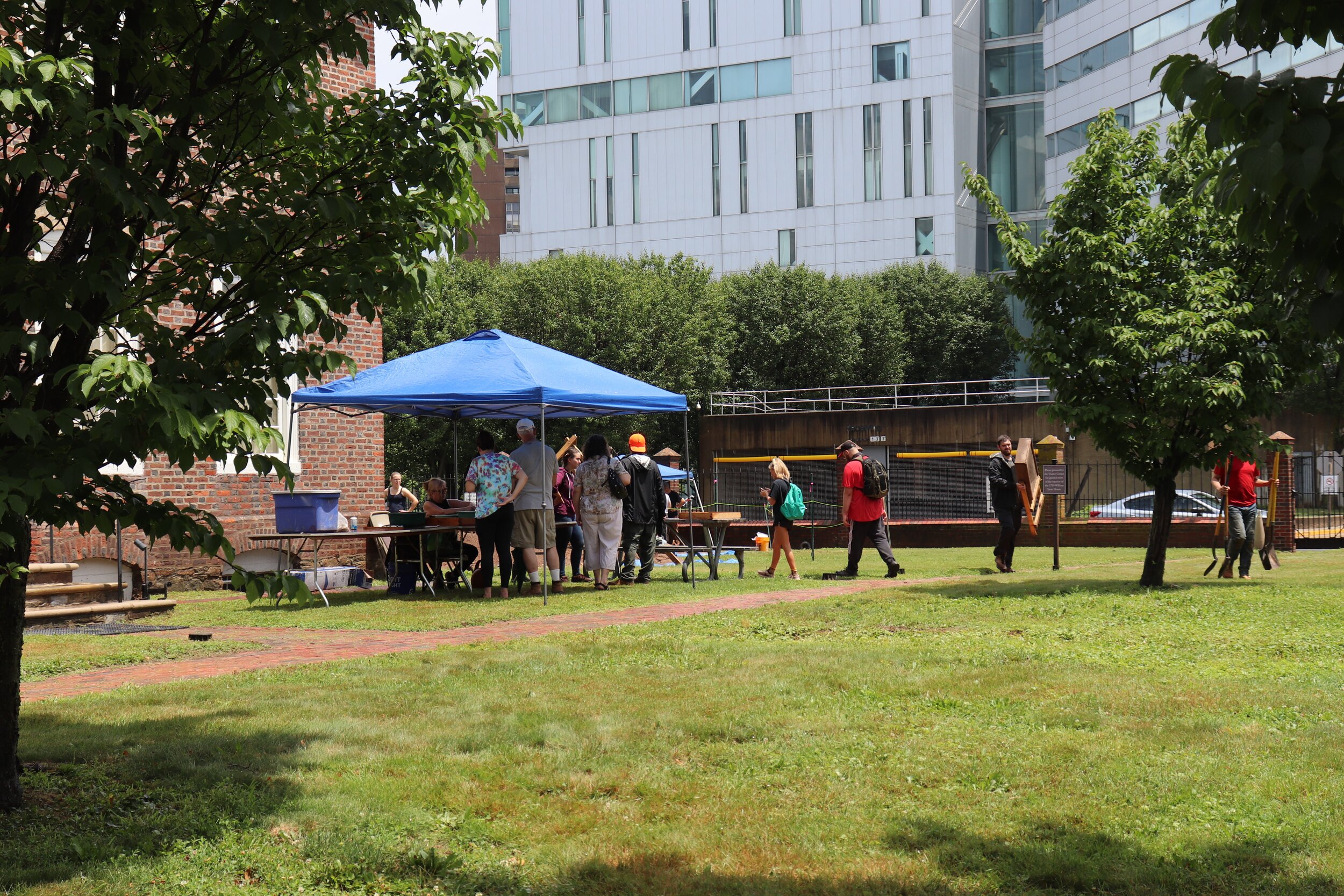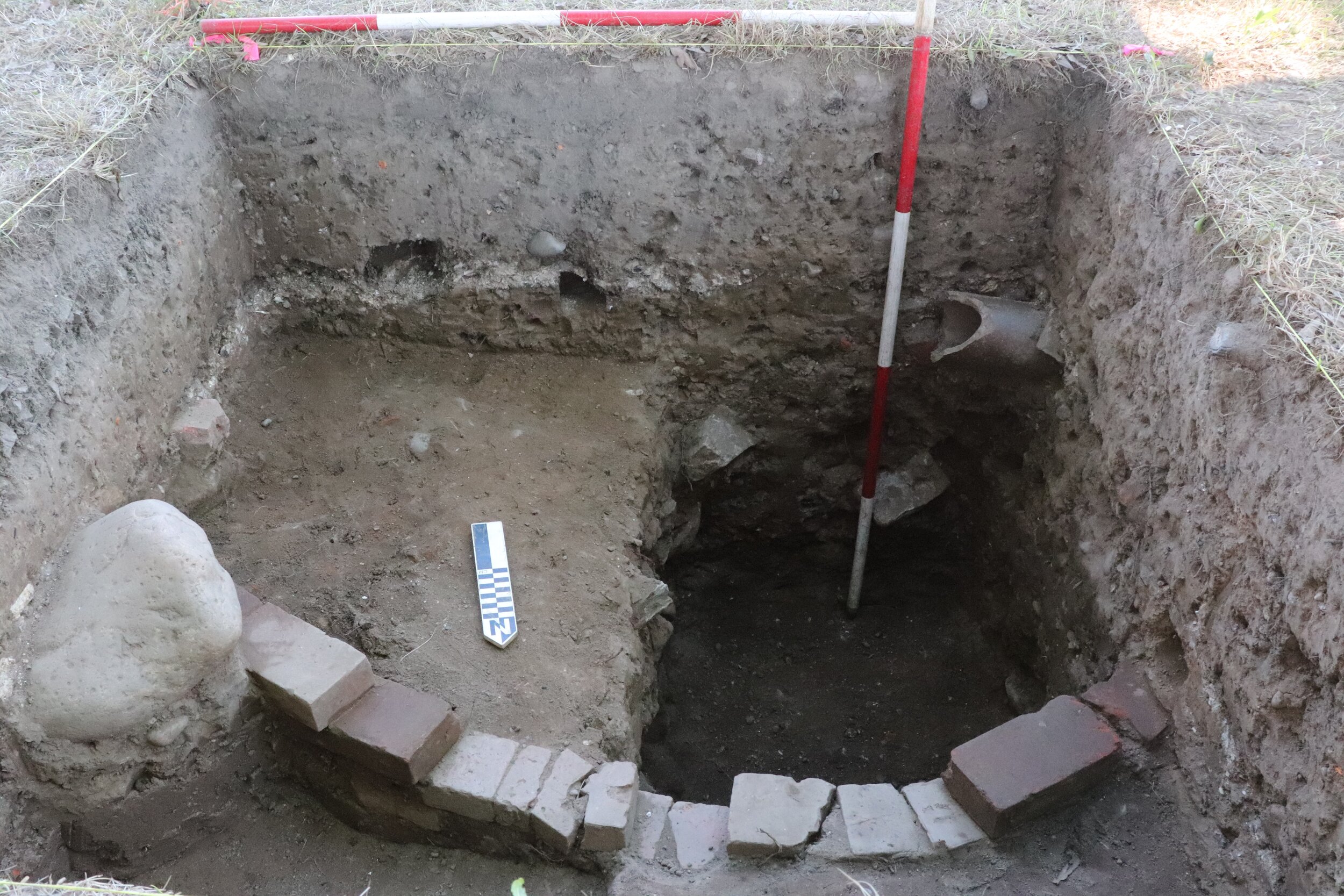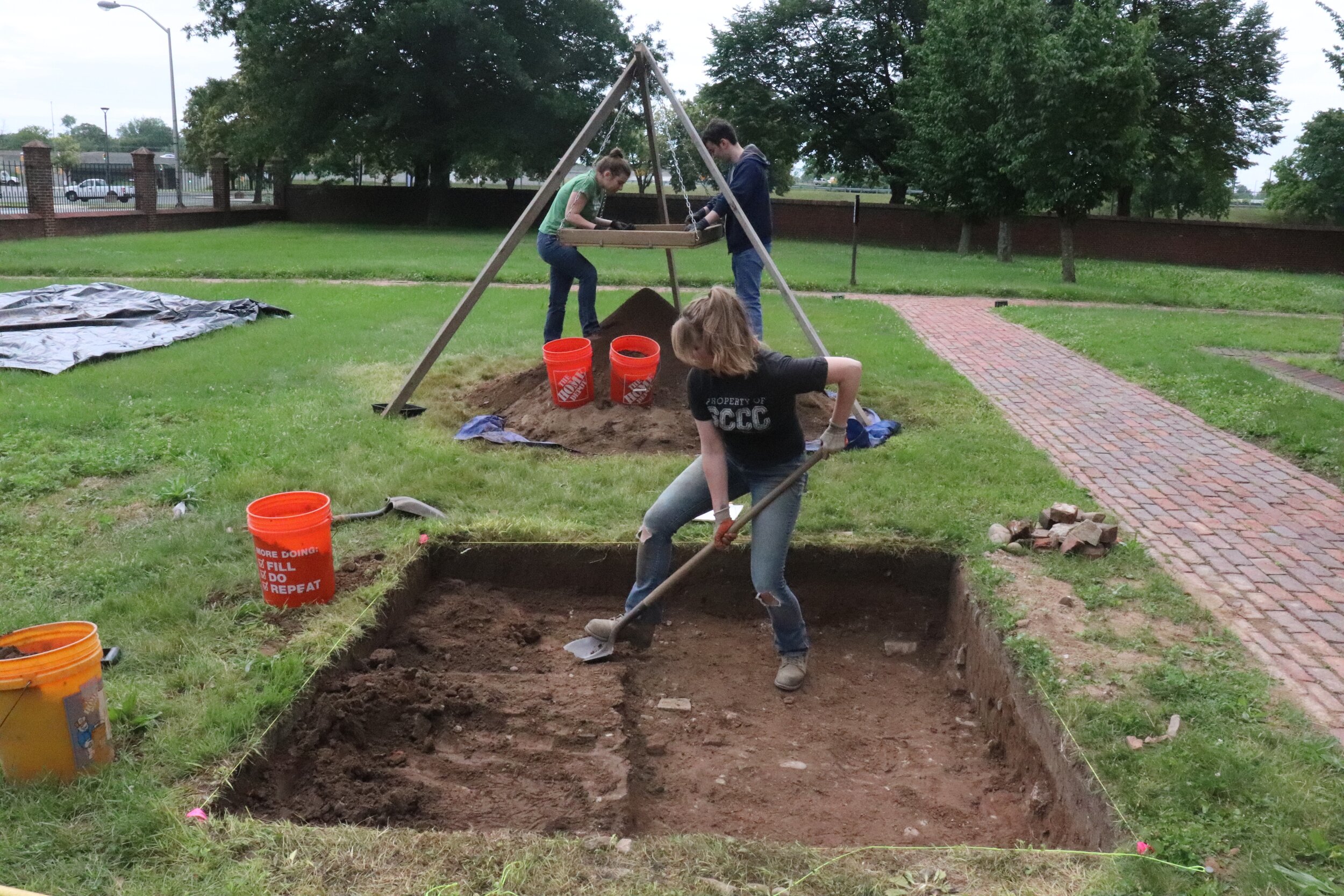This past summer, Hunter Research teamed again with the Monmouth University Department of History and Anthropology reprising the successful archaeological field school of 2019 at the William Trent House in the heart of New Jersey’s historic capital city of Trenton. Funded by the William Trent House Association through grants from the New Jersey Historic Trust and NJM Insurance, a mix of students, academicians, cultural resource professionals and volunteers labored three days a week for six weeks under the direction of Monmouth University Professors Richard Veit and Adam Heinrich and Hunter Research Principal Archaeologist Jim Lee.
Most of the field effort was expended on expanding the excavations on the site of the 1742 kitchen wing and testing various ground-penetrating radar anomalies. The footprint of the kitchen wing with its indoor well is now well delineated and several other features of the site, including a 19th-century cess pit and colonial-era well, have been pinpointed. As in the 2019 field school, Native American and Contact period strata were sampled and an abundance of prehistoric and early historic cultural material has been recovered.
On the final weekend of the field school the general public were invited to an open day when the excavations were showcased for visitors. Also on hand were expert craftspeople giving primitive technology and pottery making demonstrations, while the house was open for tours. A presentation on the work conducted to date is anticipated at the fall meeting of the Council for Northeast Historical Archaeology in St. Mary’s City, while analysis and report production are ongoing.
Concurrent with the field school, Hunter Research has been teaming with preservation architects and landscape architects Clarke Caton Hintz in completing The William Trent House Preservation Plan: Historic Buildings and Grounds (July 2021), another New Jersey Historic Trust-supported endeavor, which provides a valuable synthesis and blueprint for managing the landscape, archaeology and interpretative treatment of the Trent House site in the years to come.
